At first sight, twentieth century oil paintings like those of Pierre Bonnard seem lightweight and technically simple compared with the carefully-crafted paintings of the preceding centuries. They look like sketched snapshots, particularly those depicting everyday domestic scenes.
It’s true that most of the technical issues were taken care of by others, notably the art materials industry, which had flourished towards the end of the nineteenth century. Bonnard didn’t have a workshop staffed by artisans preparing his canvases and paint. These were instead bought ready to use, the canvases stretched and primed, his oil paints with modern high-chroma synthetic pigments in convenient tubes. These enabled artists like Bonnard to focus on their art, rather than expend time and effort on the craft of creating their own materials.
When painting landscapes en plein air, the process could be relatively brief and spontaneous, but finished figurative works were often the result of considerable preparation, which is often lost to the modern viewer because the artist’s sketchbooks and other preparatory materials have been dispersed and effectively lost from view. In two cases, Bonnard’s Le Café (Coffee) from 1915, and his Le Bol de lait (The Bowl of Milk) from 1919, the Tate Gallery has been able to reunite several of the artist’s sketches with the resulting finished paintings. Those simple domestic scenes turn out to have been carefully planned and composed.
In 1915, during the early part of the First World War, Bonnard was staying with his partner Marthe in a house which they rented in Saint-Germain-en-Laye, on the western outskirts of the city of Paris. He sketched on sheets which have been torn from a spiral-bound pad roughly 96 by 137 cm in size using graphite, almost certainly pencils.

The simplest of these three sketches shows Marthe at a table with her dog Ubu sat on her right. She’s looking down, although at this stage it’s not apparent what is drawing her attention.

Bonnard seems to have progressed to a more extensive sketch in which Marthe is drinking coffee, with her dog now along the same side of the table, on which the coffee pot stands. There’s a window behind them, through which the exterior is seen.
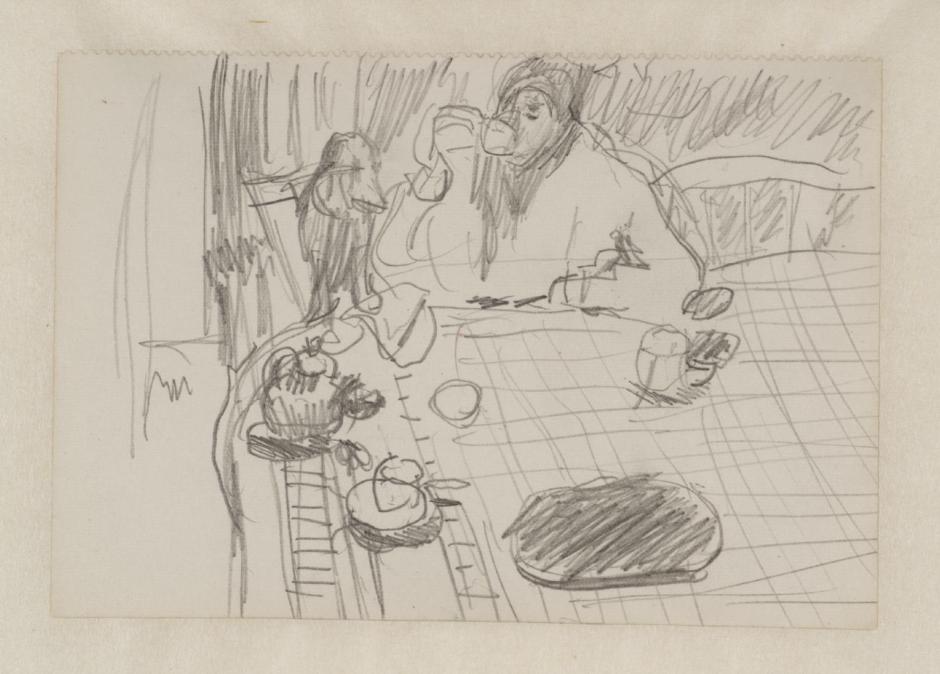
Here, in the third sketch, Marthe and Ubu are brought closer together, and she is turned towards her dog as she raises the coffee cup higher. The detail of items on the table has increased, and its cloth has a chequered pattern, as Bonnard liked. He has also re-oriented his canvas from portrait to landscape mode, and extended the tabletop details closer into the foreground, to occupy more than half the area.
Bonnard chose a canvas slightly smaller, at 73 by 106.4 cm, than his sketchpad. He applied paint quite loosely and vigorously onto the ground. He almost certainly used oil paint bought in tubes from one of the hundreds of retailers in Paris. Among the pigments listed by the Tate Gallery for this work are vermilion, cadmium and strontium yellows, cadmium orange, cobalt blue, Prussian blue and natural ultramarine. Only the first and last of those are ‘traditional’, the others all being products of industrial chemistry.

Compared with the last of the sketches, Bonnard has made small adjustments in the figures and items on the tabletop, and most significantly added part of a second woman’s figure at the right side. He has also extended the canvas downwards towards the viewer, pushing the figures up towards the upper edge. Some of these changes were made during painting.
Although worked quite quickly, this doesn’t appear to have been completed in a single session. The red and white pattern on the tablecloth almost certainly required some drying time between the application of the white and overpainting in red. However, the colours have bled into one another in parts, so the white wasn’t fully dry when the red was applied over it. Shadows of other objects on the table appear to have been among the last details to have been added.
The Tate Gallery has an even more detailed record of Bonnard’s Le Bol de lait (The Bowl of Milk) from 1919. This was painted when Bonnard spent the winter in Antibes on the Mediterranean coast of France, just to the east of where the artist was to spend much of the later part of his life.
With nine preparatory sketches in the Tate’s collection, it’s harder to work out their order of production. All came from the same pad, which seems to have been ‘perfect’ bound rather than spirally, and approximately 181 by 123 cm, its outermost corners rounded instead of square. Bonnard again used graphite, probably in pencils.

In this study of the room in which the painting was to be set, Bonnard has identified its landmarks and geometry. Set on the table is a bunch of flowers in a vase, and a tray with a jug and bowl. At the right there’s the start of a figure, perhaps, and he has roughed in the details of the balcony beyond the French windows.

Bonnard had earlier undergone something of a crisis over relative emphasis on colour or form, an age-old controversy in visual art. He made a separate study to establish the exact form of the balustrade on the balcony.

This sketch looks in detail at the layout and forms of the tray on the table and its contents, a jug and large breakfast cup on a saucer.
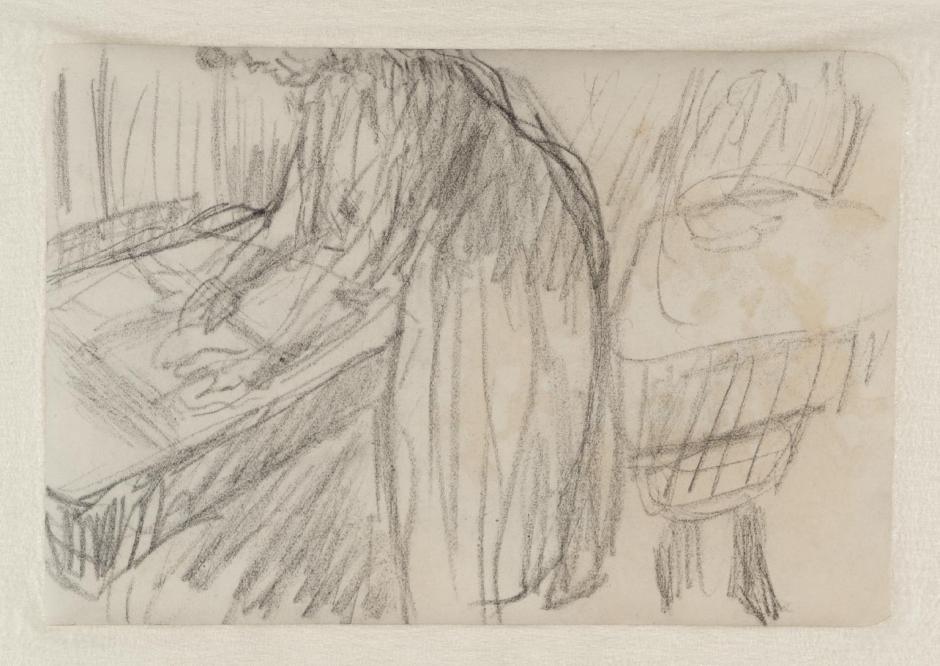
He remained unsure how best to place the figure, and in this sketch has her bending over the table. It’s not known who Bonnard’s model was on this occasion: she certainly wasn’t Marthe, and others have suggested that she might have been Lucienne Dupuy de Frenelle, a doctor’s wife with whom he had an affair, or Renée Monchaty, another of Bonnard’s lovers who almost destroyed his relationship with Marthe and shot herself a month after Bonnard and Marthe married in 1925.
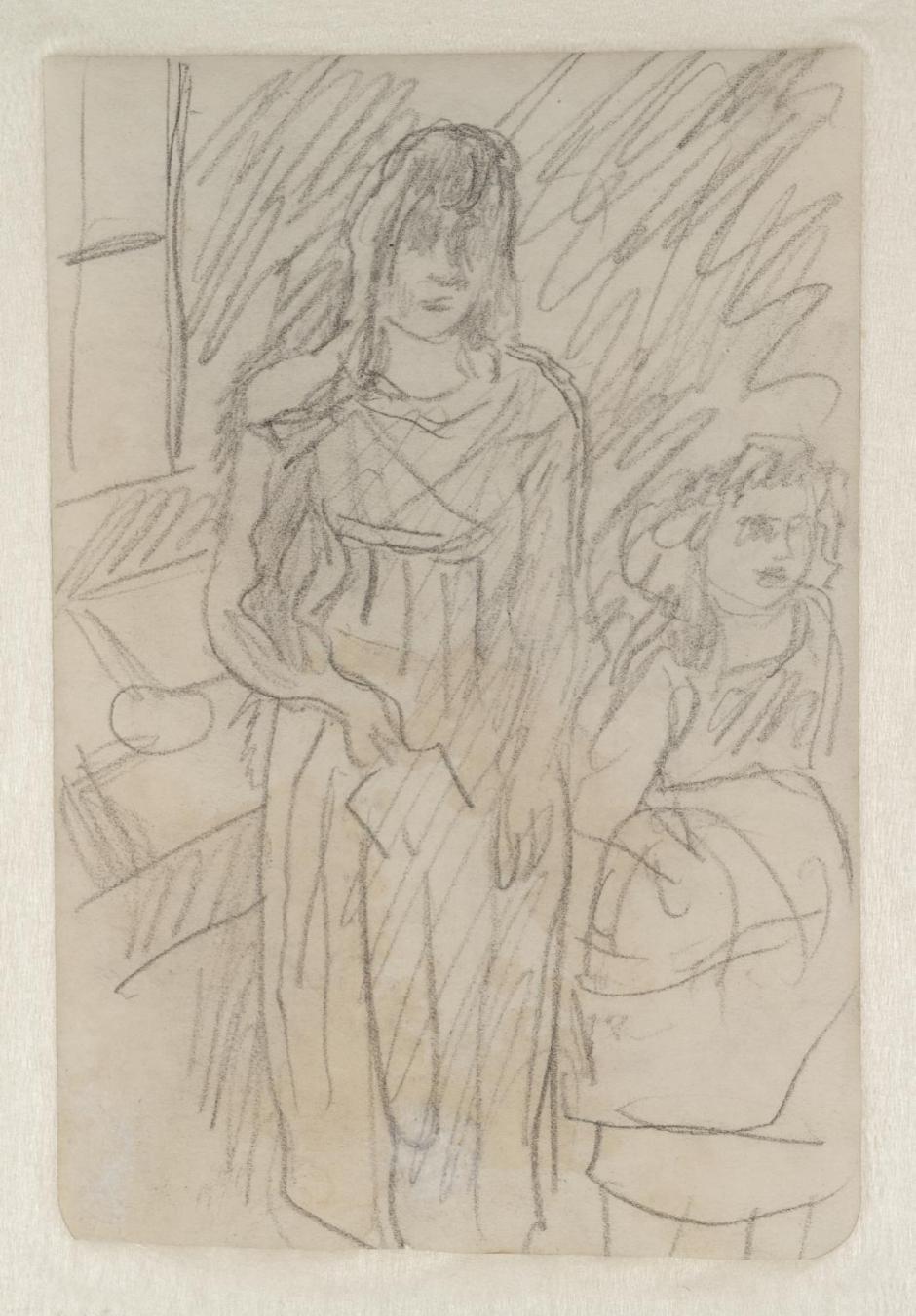
Another alternative which he explored was using two figures, a woman and a girl.
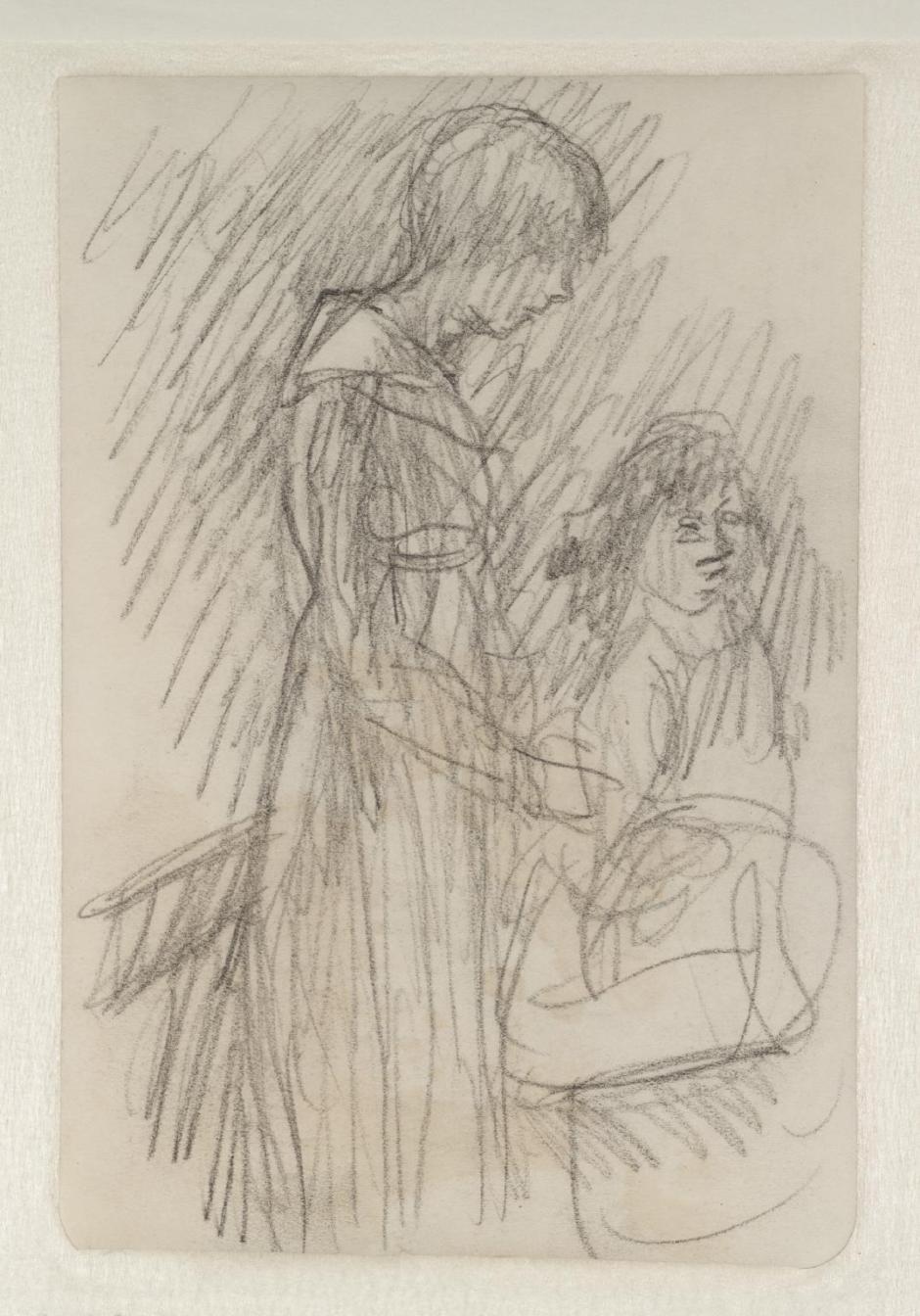
Here he pursued a different arrangement of the pair.
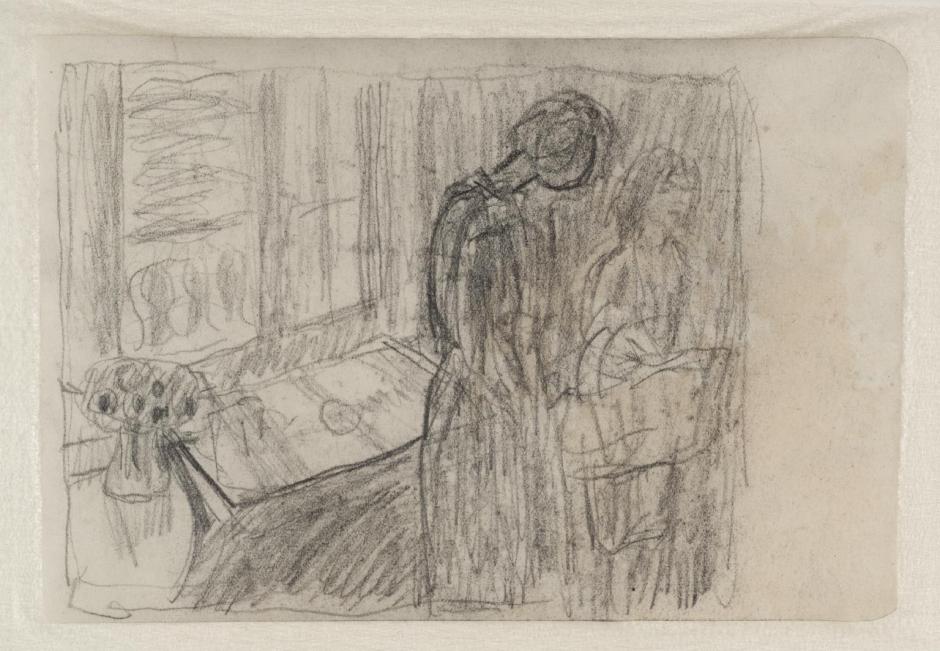
But when he roughed them into the whole room, he clearly wasn’t happy with the result.
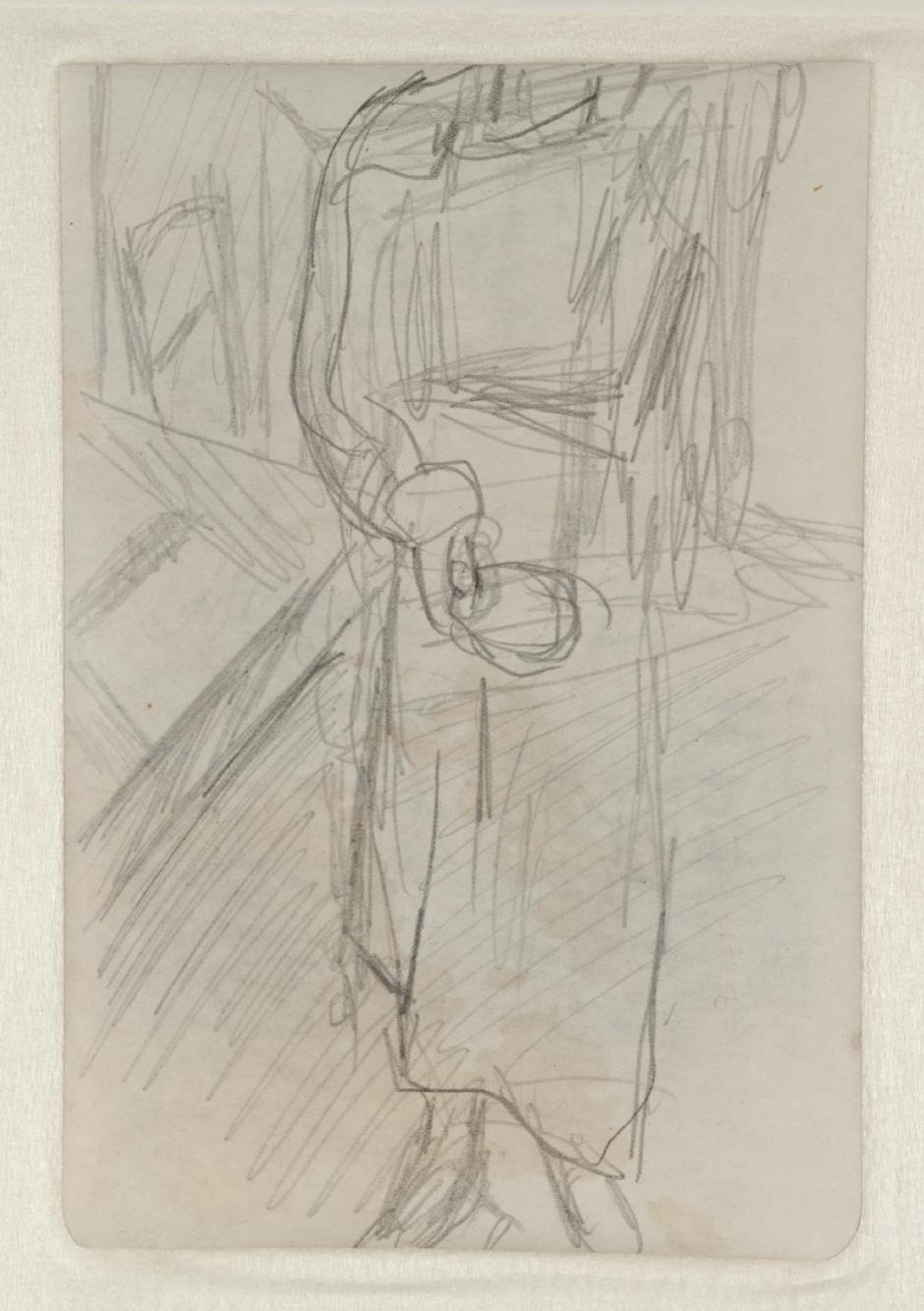
Bonnard then concentrated on the single figure of the woman holding the bowl out, which proved his preferred option.
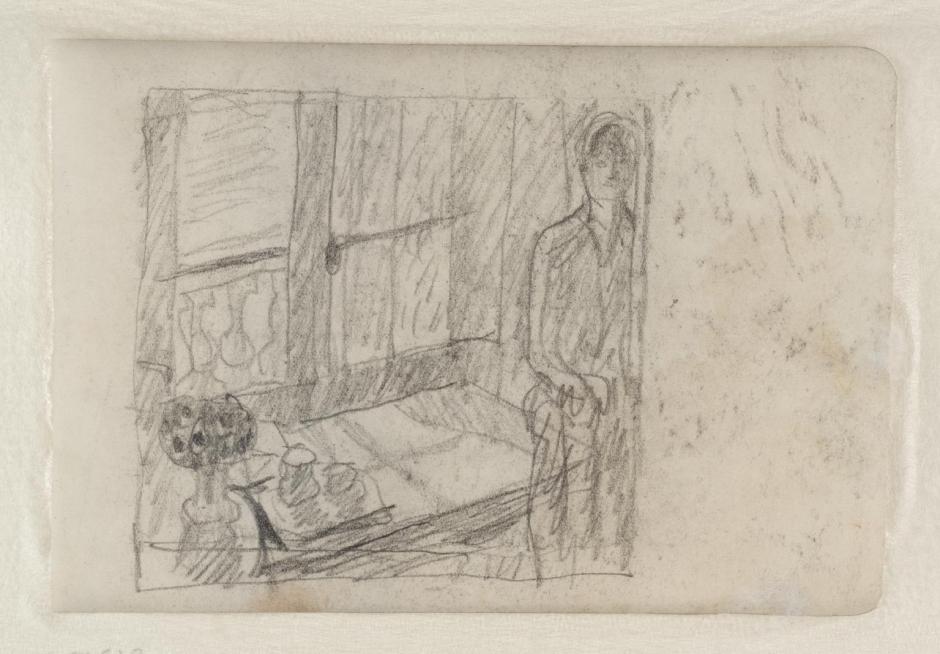
In this late compositional study he arrived at his final motif consisting of a woman holding a bowl of milk at the right edge, the large window with its balcony outside, and a table positioned by the window.
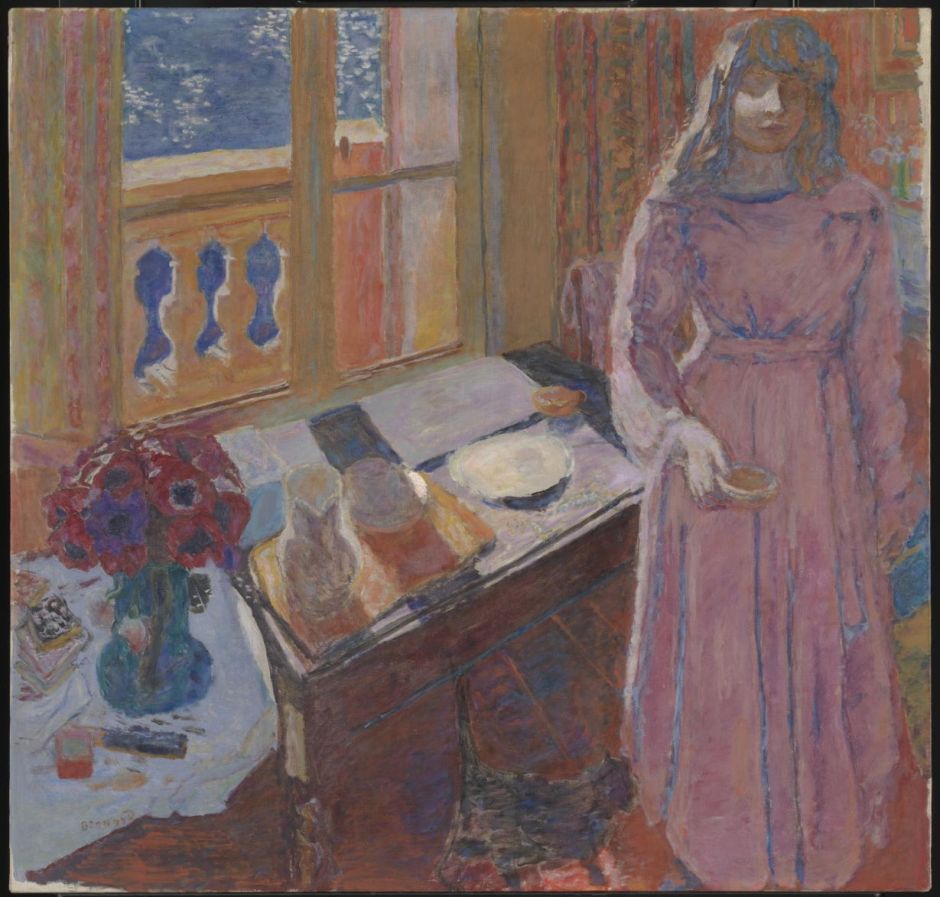
The result is The Bowl of Milk (1919), with its more muted colours reminiscent of his earlier Nabi period. The woman has just poured milk into a small bowl, which she is now about to put down for her cat. Beside her is a table laid out with four places for breakfast, with a large jug of milk on a tray. To the left is another table, on which is a vase of flowers and assorted small objects. The black cat is pacing the floor at the woman’s feet, as cats do, and was only added in the final painting.
I am particularly grateful to the Tate Gallery for purchasing Bonnard’s preparatory drawings, and for making their images available. Without them it’s so easy to think that more modern painting is simple and superficial.

